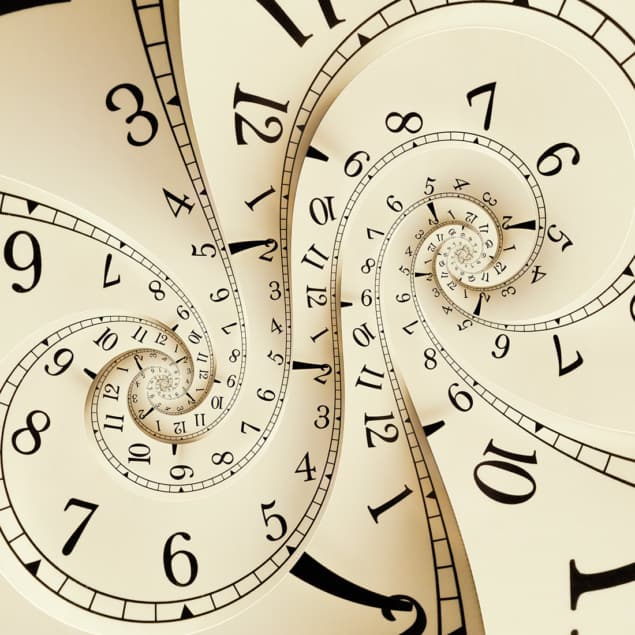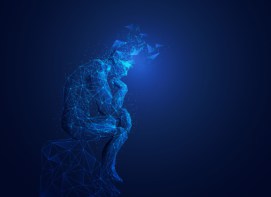Sidney Perkowitz reviews The Janus Point: a New Theory of Time by Julian Barbour

We live life forward as time flows from past to future, and believe that any closed system, like a box of particles, follows an “arrow of time” into the future as the system’s entropy grows. This seems paradoxical, since a video of a single particle in motion looks equally valid running forwards or backwards. The video does not distinguish past from future because Newtonian mechanics is unchanged under reversed time. But statistical mechanics shows that a large group of particles is highly likely to irreversibly tend towards greater disorder. As a measure of disorder, entropy is considered to show the universal forward march of time. In contrast, The Janus Point: a New Theory of Time, by physicist and science writer Julian Barbour, presents a different approach that leads to a time-symmetric universe.
Barbour’s views on the subject benefit from a personal situation that allows him to develop his ideas more freely than most researchers. He earned a PhD in general relativity from the University of Cologne in 1968 but he is not an academic. Instead, working alone or in collaboration from his home near Oxford, he has over decades produced research and review papers about dynamics and time, and two books: The Discovery of Dynamics (1989) and The End of Time (1999).
His latest effort, The Janus Point, first discusses the 19th-century origins of thermodynamics and entropy in the work of Sadi Carnot, Lord Kelvin and Rudolf Clausius. This yielded the powerful three laws, prompting Einstein to call thermodynamics “the only physical theory of universal content which I am convinced that, within the framework of applicability of its basic concepts, will never be overthrown”. The second law introduces entropy, a concept that Clausius was the first to explore, then named in an 1865 paper that contained the sweeping statement: “the entropy of the universe tends to a maximum”; that is, entropy points inexorably to the heat death of the universe when it reaches thermal equilibrium.
Barbour notes, however, that thermodynamics began with Carnot’s study of steam engines. These operate by confining steam in cylinders with pistons, making it natural to model thermal and statistical behaviour with ideal gas molecules in a box. Now though, writes Barbour, to consider the entire expanding universe we should change the “framework of applicability” by using an unbounded model. He represents the universe by multiple masses mutually interacting in free space through Newtonian mechanics and gravitation, the famous N-body problem. In 1772 Joseph-Louis Lagrange showed that for N = 3 and under certain conditions, the system passes through a minimum size just once as it evolves. Since gravitation is invariant under time reversal, so is this behaviour (or any other, for all values of N.)
The three-body system provides a simple introduction to Barbour’s ideas, but in 2014 he made a more general N-body analysis with Tim Koslowski at the National Autonomous University of Mexico and Flavio Mercati at the University of Naples, Italy, in their paper “Identification of a gravitational arrow of time” (Phys. Rev. Lett. 113 181101). The article shows that, in a computer simulation with N = 1000, nearly every starting configuration reached a minimum size, then began growing again. Notably, the form of the configuration evolved with time from a structured arrangement with clusters of bodies to a uniform distribution at the minimum size, then again developed clusters as it grew.

The unsung theory: why thermodynamics is as important as quantum mechanics and general relativity
This behaviour represents two streams of time. Each begins at the minimum point, and tracks an expanding configuration as it forms clusters (or galaxies), although not with identical futures, due to fluctuations. Barbour dubbed the minimal state the “Janus point” after the Roman god of transitions, portrayed as two faces gazing in opposite directions. The Janus point is perhaps a kind of Big Bang, but it lies in the middle of the universe’s development. We exist on one side of this point and follow its gravitational arrow of time into the future. We can also look back to the Janus point but not beyond it, just as with the Big Bang, but we now know that the time stream on the far side gives the universe overall symmetry in time.
My brief summary is only a glimpse into Barbour’s ideas. The book further explains the Janus point and its important corollary, the rise of cosmic structure (in Barbour’s phrase, “shape complexity”) as the universe evolves. This, he believes, makes his proposal more scientifically and philosophically acceptable than a scenario where the universe descends from the special initial Big Bang condition of low entropy (high order) into growing disorder and final heat death.
Any reader willing to engage with Barbour’s ideas will come away enlightened
Barbour’s clear examples and evocative metaphors will help non-physicists follow his detailed arguments, and he lightens the science with apropos quotes from Shakespeare and others. Still, much of the exposition is dense for general readers, whereas cosmologists may well be unconvinced by Barbour’s quantum and relativistic extensions of his classical theory. But any reader willing to engage with Barbour’s ideas will come away enlightened.
A clue to evaluating the book comes from its epigraph “The universe is made of stories, not of atoms,” from the American poet Muriel Rukeyser. She believed that science has much in common with poetry, so perhaps she meant that humanity needs origin stories to understand its place in the cosmos. The narratives that come from science are unique in being supported by theory and evidence. In that spirit, Julian Barbour is telling us a new scientific story about time. Could it prove more meaningful than the one based on entropy? Only time will tell.
- 2020 Bodley Head 400pp £20hb



